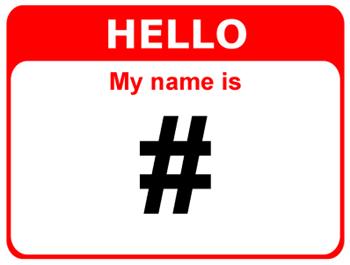‘Twas a first for me, talking to an audience in costume: glance up from the computer screen to see a gal in a Victorian bustier or a couple life-sized Star Trek action figures.
Welcome to Wyrd Com, a convention for live action role-playing gamers – LARPer, as they are commonly known. Throughout the halls of the Orange County (CA) Hilton one encountered humans impersonating every type of hero and villain, from pop culture icons to steam punk figures, with pit stops along the way for furries, pirates, and Middle Earth peasants. Kind of a bus-and-truck version of ComicCon.
 LARPers at WYRD CON. Photo courtesy WyrdCon
LARPers at WYRD CON. Photo courtesy WyrdCon
“From Live to the Web and Back Again” was the topic of the panel, moderated by Brian Seth Hurst, who asked four speakers to bring examples of transmedia work that inspired us (even though he doesn’t like the term).
I went overboard, providing a slide deck packed with history, examples, and a little analysis, which I share with you in this post. (After which, if you scroll down, I present a selection of the projects shared by my co-presenters, Jay Bushman, Esther Kim, and Lori Schwartz.)
The entire presentation is now live on SlideShare.
Here are some key points:
The transmedia landscape is broad, encompassing entertainment franchses, multi-platform and cross-platform stories, alternate-relatity games, interactive media, and new forms of connected entertainment.
Over a period spanning more than 30 years, key creative examples illustrate aspects of the story form, including:
- Performance
- Interactivity
- Immersion
- Multiple platforms
- Mysteries and puzzles
- Scavenger Hunts
- Parallel casts
- Merged interface design
The new millennium has given rise to a canon of interactive and multi-platform “greatest hits” list that includes Heroes, Lost, The Truth About Marika, I Love Bees, Why So Serious?, Year Zero, Conspiracy for Good, Head Trauma, and Collapsus.
Many transmedia successes have featured stories that movie from live-action to the web and back again. So it’s useful to look at some of the aspects of web-based story formats that are happening these days. In other words, learn how to Play on the Web.
Today’s creators can weave components of an audience member’s own life into the story by leveraging the power of web-based tools like Facebook Connect (and other API integration tools) as well as HTML 5 and WebGL. Examples include TAKE THIS LOLLIPOP, THE WILDERNESS DOWNTOWN, COBALT:MISSION IMPOSSIBLE, 3 DREAMS OF BLACK, and AIM HIGH.
A unique and powerful storytelling tool from the web is video created via direct address into the webcam, as exemplified by Lonely Girl 15, in which the story centered on the lives of webcam-using young people. For months most users thought that the “story” being unfurled in this fiction was actually real, because this format for storytelling was available to Everyman. Indeed, the audience posted videos of their own, deepening and enriching the story.
An site called BECKINFIELD, which I wrote about earlier this year, uses the same user-video paradigm, but with a more defined story framework. Users assume the personae of characters in a fictional town, and through their contribution the story unfolds.
Impact on Live Theatre
Live theatre itself has been impacted by the audience demand for interactivity, with the success of SLEEP NO MORE a perfect example. NO GOOD DEED adopts the multi-platform model, with versions of the story presented as both live theatre and a graphic novel, as well as a web-based hub. ACCOMPLICE is a urban exporation game/theatre piece that takes place in the real world (New York and Hollywood). THE SEED brings “theatre” to Facebook, with an account in the name of a fictional character. HAUNTED is an interactive haunted house story from “Carnivale” creator Daniel Knauf.
Book authors are impacted by the availability of powerful new interactive storytelling tools. Photographer Ethan Russell’s ebook memoir AN AMERICAN STORY includes photos and videos and a user-contribution area of the companion website. Children’s book author Michael Grant has turned to the web to unfurl new stories.
Corporate brands have turned to transmedia storytelling in a big way with a prime example being Wrigley’s collaboration with 42 Entertainment on the widely diverse multimedia ARG called PROJECT ICEFLY.
Independent filmmakers with relatively scarce funds for their primary work have become inventive with business models, identified brilliantly by key practitioner Brian Clark, whose “Remembering 9/11” project with the Smithsonian shows how audience engagement with a delicate subject can work effectively. Other indie examples from Christy Dena, Lance Weiler, and Jan Libby round out the presentation, which finishes with an inspirational quote from author Neil Gaiman:
When you start out a career in the arts you have no idea what you are doing. It’s impossible to do anything wrong. Because nobody’s done it before, they haven’t made up the rules to stop anyone from doing that particular thing.
If that doesn’t stay your hunger for great examples, here are a few more:
 Friendly panelists. Photo courtesy of Angelique Toschi and WyrdCon
Friendly panelists. Photo courtesy of Angelique Toschi and WyrdCon
Jay Bushman presented DIRTY WORK, the first interactive online series from Fourth Wall Studio, where Jay is a key creative. The series, and several to follow, utilize the company’s RIDE.tv interactive platform.
Jay also discussed his work presenting unique Twitter stories twice a year, most recently the “Game of Thrones”-themed #SXSWesteros and The Lizzie Bennet Diaries, a social media retelling of Pride and Prejudice.
Among the projects discussed by Esther Lim were Clue Tracker, a game inspired by ABC Family’s Kyle XY; Superstruct, and several corporate games she authored.
Lori Schwartz presented CORAL: REKINDLING VENUS, as well as a powerful example of social media and social movement: the “Million Hoodies March” in support of the memory of Trayvon Martin which was started by a young African-American who also happened to be employed as a social media employee at McCann, her former ad agency, which released a very interesting study of youth and media, PDF here.
Brian Seth Hurst showed a great satirical clip featuring characters from SUPERNATURAL, discussed DAYBREAK, and Conspiracy for Good.
 Tuesday, May 14, 2013 at 10:52 AM by
Tuesday, May 14, 2013 at 10:52 AM by  Nick DeMartino
Nick DeMartino  Key to the Sanditon strategy is the formulation of their Theatrics site’s value for audience engagement. The overall storyline calls for residents of the town of Sanditon to “ beta test” a new type of online video software called Domino. The Theatrics site is where that “test” is being conducted, allowing fans to create their own characters and interact directly with the storyline in a completely new interactive experience.
Key to the Sanditon strategy is the formulation of their Theatrics site’s value for audience engagement. The overall storyline calls for residents of the town of Sanditon to “ beta test” a new type of online video software called Domino. The Theatrics site is where that “test” is being conducted, allowing fans to create their own characters and interact directly with the storyline in a completely new interactive experience.
